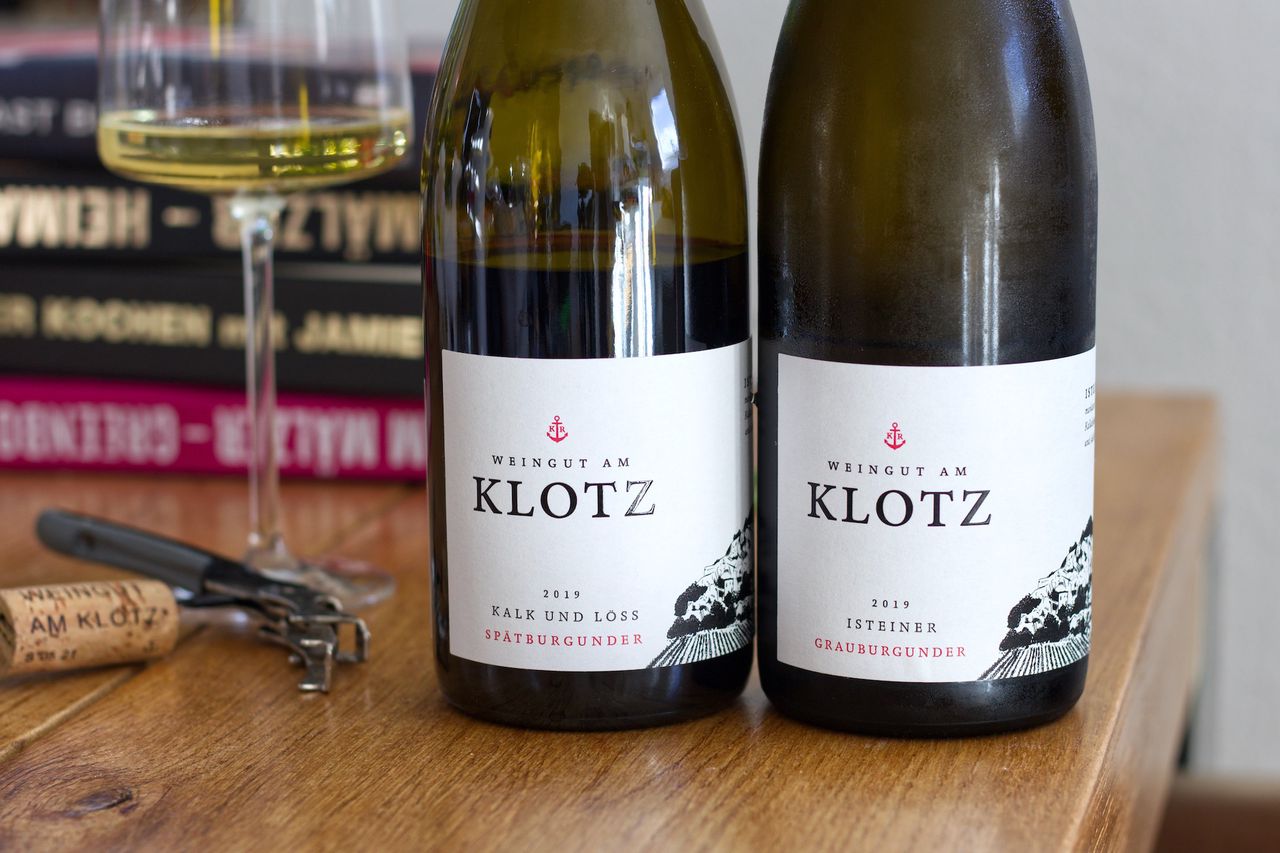Two Bottles Weingut Am Klotz
We are drinking a Kalk und Löss Spätburgunder and an Isteiner Grauburgunder, both from 2019, from the Am Klotz winery.

As already announced, the wines today are again from Baden. And although the wine-growing region of Baden has quite a north-south span, we remain this week again far down south on the German-French border in Istein, a suburb of Efringen-Kirchen. The Am Klotz winery was only bought in 2019 by the Keller family of the Franz Keller winery and the Reinecker family of the sparkling wine estate of the same name. With a focus on Chasselas and Burgundy grape varieties, the two families are now jointly responsible for the wines and, of course, bring a lot of experience to the joint winery. The winery Am Klotz is exciting above all because of the Klotz, a characteristic mountain ridge with a castle on top, and the Jurassic limestone soil around the Klotz on which the vines stand. These are cultivated in a natural way and in the meantime a small flock of sheep is also part of the team to help with the soil care. The grapes for the wines are picked entirely by hand, fermented spontaneously and then bottled with minimal sulfur. The Pinot Noir Kalk und Löss, entry into the red wines, is aged for one year in used barrique, while the Isteiner Grauburgunder (Pinot Gris), as Ortswein one step above the Pinot Noir, is aged first in large wooden barrels and then in stainless steel.
The Pinot Gris is creamy and dense on the nose with quite little fruit, you smell a bit of honeydew melon and minimal wood. And also on the tongue, the wine is defined by its texture, creaminess and its density. Somehow it reminds me of white wine from the south, which it definitely is in the German context. I really like this kind of fruit and texture and it never really gets too much here. After all Baden is not southern France. Super long it is in any case and it becomes increasingly salty. This is really strong for a first vintage, even if this is of course not really a first vintage with all the winemaking experience involved. Then with air, a touch of cream caramel and yogurt with yellow fruit comes to the nose. This light lactic note suits the wine extremely well.
An evening later, the change is more gradual than drastic. That doesn’t matter at all, though, as we liked the wine a lot anyway. At most, the creaminess becomes a bit less with air and herbs come in on the nose instead. A wine for Pinot Gris skeptics.
In the Pinot Noir one smells cherries and their pits. Marzipan is there and red berries. And there’s a good amount of red fruit on the tongue as well, paired with a fresh acidity. With air, another touch of smoke comes into the nose. In the complexity it is noticeable that this is a small step below the Grauburgunder in the range. But that’s not a criticism of the wine at all, at most the drinking order or the selection was the problem. But actually not even that, because this is so uncomplicated and delicious that there is no reason to complain.
And in contrast to the Pinot Gris, something really happens overnight in the Pinot Noir. There is now much more spice in the wine, more smoke, everything seems more open and intense. There’s a bit of cola, some forest floor, balsamic vinegar, but also coolness and freshness. And together with the very fine tannin, the length, the juiciness and spiciness also on the tongue, it is then not so clear that the wine is actually a small step below the Pinot Gris. I’d call this a very successfull first vintage.